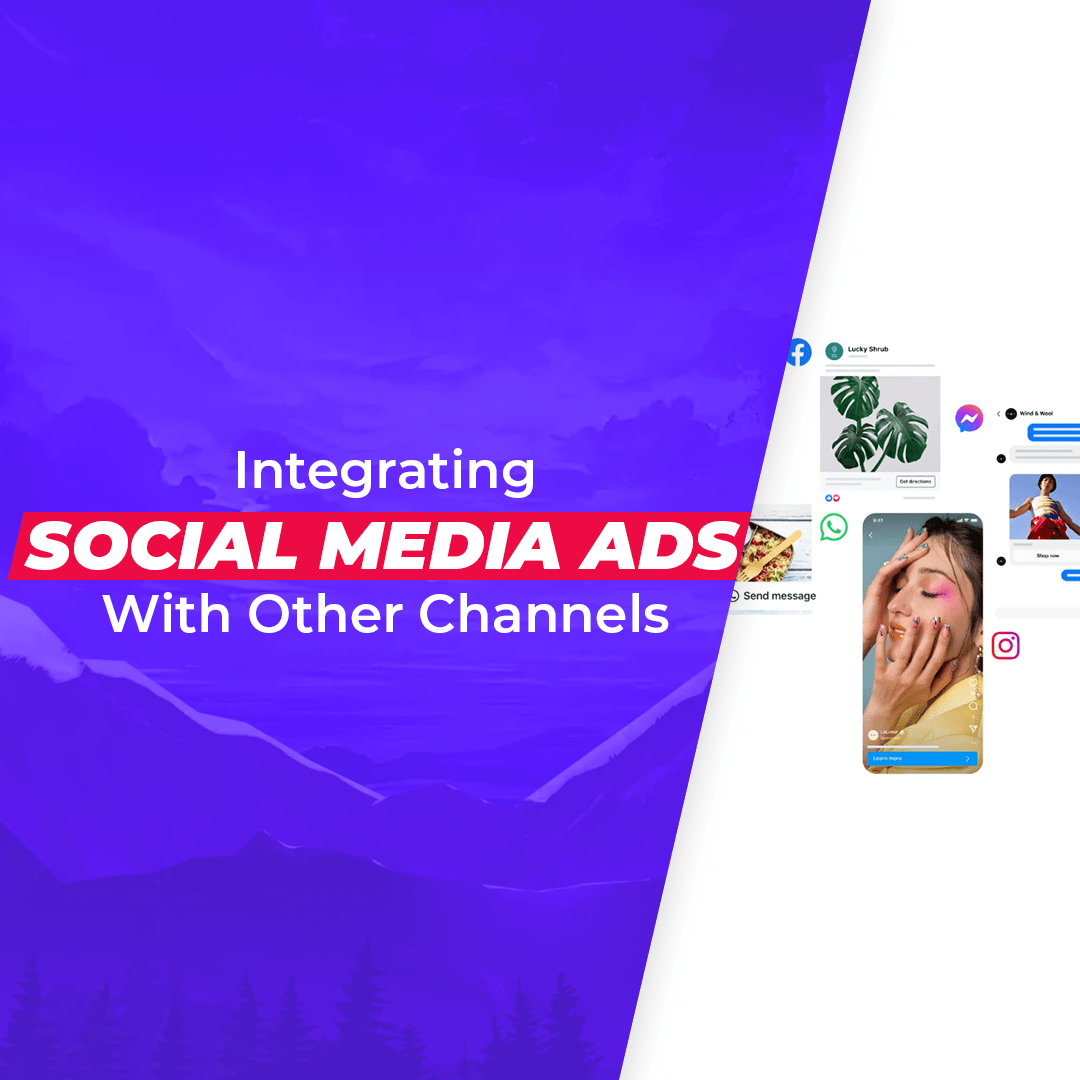There are many marketing channels out there, and your business is most likely using a number of them. In this blog post we’ll go over the benefits of integrating social media ads with other channels, and how to do it.
What are Social Media Ads?
When using Social Media (such as Facebook, Instagram, X, Pinterest, etc) you may notice ‘Sponsored posts.’ These are ads which a company has paid to show you their ads.
It is sometimes referred to as ‘paid social’ because you’re paying to show your ads on a social platform. This contrasts to ‘organic social’ which is posting on a social media platform for free. It is also different to ‘paid search’ which is where you pay to rank higher on a search engine.
The primary paid social platform is Meta Ads, because it incorporates both Facebook and Instagram in the one platform, and allows your ads to be shown on each platform at the right times for your prospects to take your desired action.
Social Media ads allow your business to target your ads to the exact audience that suits it best. You’re able to segment audiences based on location, demographics and psychographics.

Example of a Meta ad.
What are the benefits of Social Media Ads?
There are many benefits to running ads on a Social Media Platform. That being, greater targeting options, cheaper advertising costs, flexibility, high degree of control, and knowing exactly where your customers are coming from with advanced attribution models.
Greater targeting options

Source: Digital Marketing Group
With Social Media Platforms gathering a lot of data on its users, it’s able to segment them by interests, location, intent, and other factors. As opposed to a billboard or TV advertisement that has little discernment for who exactly is looking at them, paid social can be shown only to your target market.
If you’re a mortgage broker, you can ensure that your ads are only shown to people 30-60 years old, and have shown interest in mortgage brokers, making them much more likely to convert than say a high schooler.
Cheaper advertising costs
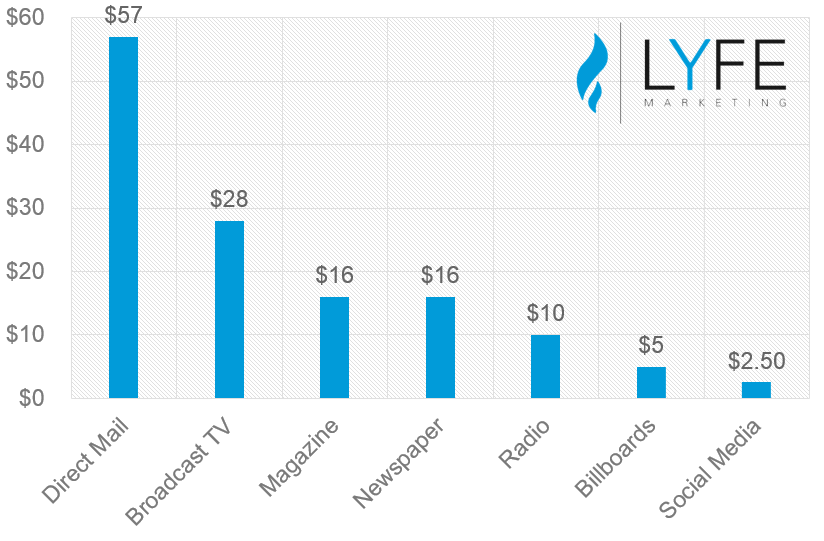
Source: Lyfe Marketing
The cost of advertising on platforms like Meta is generally a lot cheaper per impression than traditional media. This allows you to garner a much greater brand awareness than other mediums. With that being said, the price of an ad can vary quite a lot depending on what the ad is, and what the goal of the ad is.
Top of funnel ads generally have cheaper CPM’s than bottom of funnel ads. Overall, Social Media Ads are much cheaper than most other forms of advertising.
High flexibility
With the ads being purely online, at the click of a button the ads can be completely switched up, stopped, or started. This means that as a business owner, you have a lot of flexibility about when your advertisements are shown. You can also stop and start them when needed, though frequent stopping and starting isn’t recommended due to the algorithm).
High degree of control
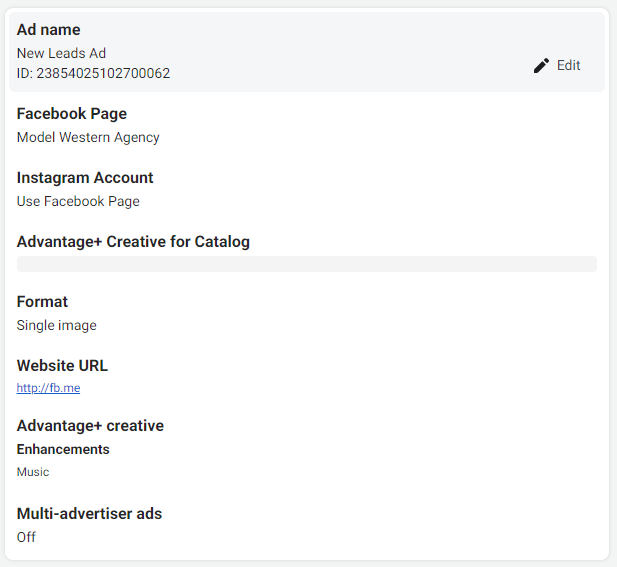
With Social Media advertising, you’re able to really fine tune the way your ads are presented. So long as you’re operating within your platform’s rules (see for example Pinterest’s advertising guidelines), you can customise how each placement will look, as well as trying a great degree of different creatives.
This all benefits advertisers because they can hone in on exactly how they want the ads to look across all placements and channels.
Know Exactly where your customers are coming from
When set up correctly, paid social ads allow you to track exactly which ads are generating you the most customers. This is extremely beneficial, a better understanding of which ads are converting well, allows you to better understand what attributes of your products or services your customers value.
What are Integrated Marketing Campaigns (IMCs)?
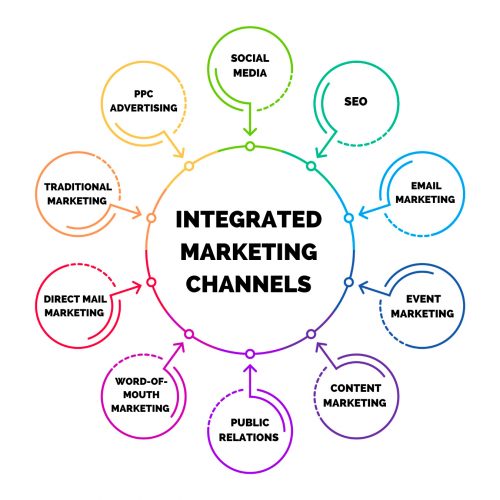
Source: Marion Marketing
Integrated Marketing Campaigns are those which are across multiple channels, such as TV, billboards, Radio, and Social Media. They are a very powerful way to promote your business as you’re able to stay at the forefront of your prospects minds.
Salesforce concluded that it takes 6-8 touchpoints to convert a stranger into a viable lead. Therefore, an IMC allows you to get more touchpoints, in multiple different ways and reach the required 6-8 faster than if you were to just advertise on one channel.
IMC is the broad term for when businesses integrate Social Media Ads with other channels.
How to integrate Social Media Ads with other channels?
Integrating Social Media Ads with other channels is a big job, and it’s important to do it right. Getting it wrong can lead your prospects to get confused and take their business to your competitors.
To integrate Social Media Ads with other channels it’s important your focus on strategy first, ensure consistent messaging, and potentially get external help.
Strategy comes first
Your marketing strategy is king. This comes before you focus on tactics. Marketing strategy involves activities like, choosing what to promote, what are its key benefits and features. Also who are you targeting, how does your target market live their life and what is the best way to reach them?
It’s important to differentiate strategy from plans and tactics. Strategy is the answer to ‘how will you achieve x?’ This may be how can you get more impressions than all of your competitors? Or how can we get the highest quality leads? The answers to these questions don’t lie in plans or tactics, they lie in strategy. Harvard Business Review has a great Youtube video explaining the difference.
A plan is simply listing out actions that need to be taken, that can be checked off. And a tactic is the specific mediums used to carry out a strategy.
Ultimately, your strategy must be in place before you build an IMC and integrate social media ads with other channels.
Ensure consistent messaging
Consistent messaging is a must when it comes to multi-channel advertising. However, this is easier said than done. Different platforms are engaged with in a different way.
For example, a billboard can be used to elicit desire for your product by showing a pain point or highlighting an desired outcome. With billboards, people can only look, they cannot interact.
With Social Media on the other hand, you can engage your audience by asking them to click a link, to like, to share, or to comment, to name a few. This means that the exact words you use in your ads might vary between online and offline channels.
Headlines

Source: ThoughtCo
To ensure consistent messaging consult your strategy that you’ve developed. List out a number of potential headlines that you could run across the different channels you wish to target. From there you could make channel specific tweaks so that the headline is more relevant to that channel. However, ensure this doesn’t go against your overall strategy. If your strategy is to be easily remembered, maybe using the exact same headline across all channels is better suited to your goals than tailoring your message for each channel.
Once/if you’ve tailored the headline to each channel, read it again and make sure that it is in line with your marketing goals and strategy.
Body
Many platforms allow for a body of text to be used as well. This text allows you to elaborate on your headline. There are many different ways to use this text to elicit your desired reaction.
The body is where most marketers mix their messages
Because the body has much more words than the headline, the elaboration can often conflict across channels. The method for preventing mixed messaging for the body is similar to the headline.
Write out your core body text messages in dot points, then write it out in the actual format you want it for your channel specific body text. Put all your different versions into one document and read them all with a fine comb looking for any potential conflicts.
For teams it’s a bit more complicated but you can start by making sure everyone is on the same page with strategy.
Creatives

Source: MWA Ad for Geelong Solar Energy
‘Creative’ is generally the word used to refer to the visual part of your ads. Like with the textural elements, it’s important it’s consistent.
This includes obvious things like making sure your brand colours are the same across all channels. If you’re showing people, make sure they’re in line with your strategy, if you’re showcasing your product make sure it’s also shown in a way that’s in line with your strategy.
For example, if your strategy is to make your product as mass appealing as possible, you could use many different people in your creative, in different clothes, doing different activities. However if your goal is to appeal just to one highly profitable market segment, make sure all the people in your ads line up with this segment.
What about running multiple different ads?
Running multiple different ads on social media is a great way to increase conversions. It gives you more data and allows you to optimise your campaigns. It’s essentially a must do for any social media campaign.
Similar to changing headlines and body text across channels, you need to always refer back to strategy. Make sure you’re showcasing things that are in line with your strategy.
Getting external help

Source: Iceberg Web Design
Getting external help is a must for smaller businesses wishing to run large IMCs. Hiring agencies for certain channels can take a lot of the work out of running several campaigns on different channels.
Model Western Agency Specialises in Meta Ads
If you’re looking to add Meta ads to your IMC, we’re a great first point of contact. We love consulting with different clients on their different strategies.
How to measure the performance of multiple campaigns?

Source: HowStuffWorks
One of the big challenges related to integrating social media ads with other channels is that there are different measurements for success.
For social media, you can track conversions easily, you know which ads are performing better and you know exactly how many sales your campaigns have directly created.
With traditional media, you don’t have that clear link between impression and sale, which makes it much more difficult. Moreover, different traditional media’s have different metrics to track, a TV ad can tell you how many people watch the commercial, however a billboard doesn’t have that exact figure, rather rough estimates on traffic in the area.
Understand what metrics you can get from each medium
Knowing what metrics are available to you from each medium is the first step in measuring campaign performance. Do research to find out what’s available before setting KPI’s to match.
Set relevant KPIs
Knowing what information you’re able to get about your ads, set realistic KPIs. Make sure your goals are SMART. That means Specific, Measurable, Achievable, Relevant, and Time-bound.
In the case of KPIs your goals need to be clearly defined, be related to the information you have available to you, be realistically achievable, relevant to your marketing strategy and have an end date that evaluation takes place.
In the case of Social it could be to increase CTR by 10% (specific and measurable using platform analytics), in the next 2 months (achievable depending on your industry and ad account maturity, and time bound).
Compare to your businesses past sales data
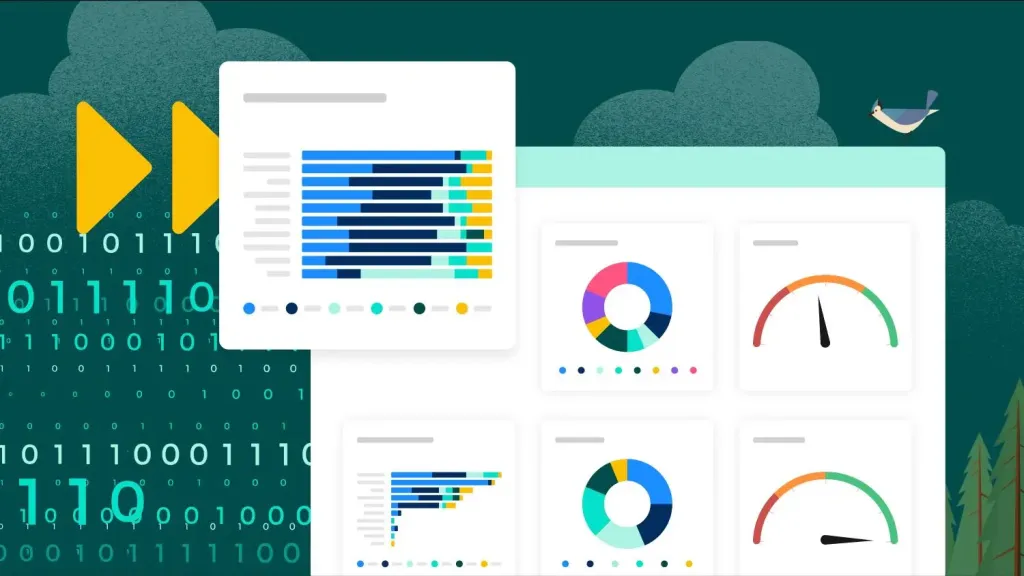
Source: Salesforce
Comparing current data to your businesses past sales data can become an incredibly complicated mathematical operation to get accurate results. Seasonality, volatility and other principles can all increase the accuracy of your sales data comparison. It gets much more complicated when multiple campaigns are running.
On a high level you can ensure that your overall marketing efficiency ratio is above 1.
Marketing efficiency ratio = Total sales revenue / Total marketing spend
(For the same period of time)
If this number is above 1, it means your advertising efforts are most likely profitable.
There’s still many caveats to this as free advertising channels such as word of mouth or organic social could be contributing to total sales but not to advertising spend. However it’s a great starting point.
Measuring Social Media Advertising Results
Knowing that paid social can be very well tracked, how does one measure your paid social results?
Set up ad tracking
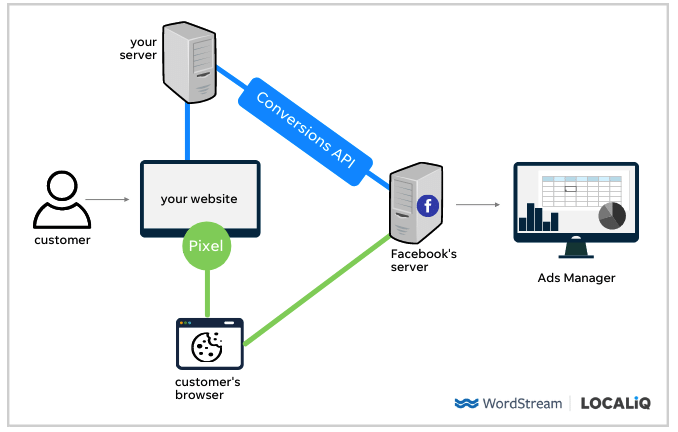
Source: WordStream
The first thing to do is set up tracking for your ads. With Meta this means setting up the Meta pixel and/or Conversions API on your website. These allow your ad account to see what users are doing after they click on your ad, meaning you’re able to tell which sales on your website came from Meta.
It also tells Meta which users become sales, giving the algorithm more data to target similar users.
Meta has many website tutorials for setting up these platforms. Whichever platform you’re using will have YouTube tutorials, making the process a lot easier.
Making sense of paid social advertising data
There are many metrics to look out for but generally cost per result is the key metric. If your goal is sales, then you can look at cost per sale, and thus ROAS (Return On Ad Spend).
Knowing your back end costs of your item, you can factor in cost to produce, cost to deliver and then cost per sale from online advertising. Subtracting that from your sale price, you can see if you’re still profitable given your campaigns cost per sale.
For service based businesses, you can track cost per lead. Knowing your lead conversion rate (how many leads turn into sales) you can calculate a rough cost per sale (cost per lead / conversion rate as a percentage).
Again factoring in your cost per sale into your other costs you can determine if your social media campaign is successful or not.
Get more from your Social Media Ads with Model Western Agency
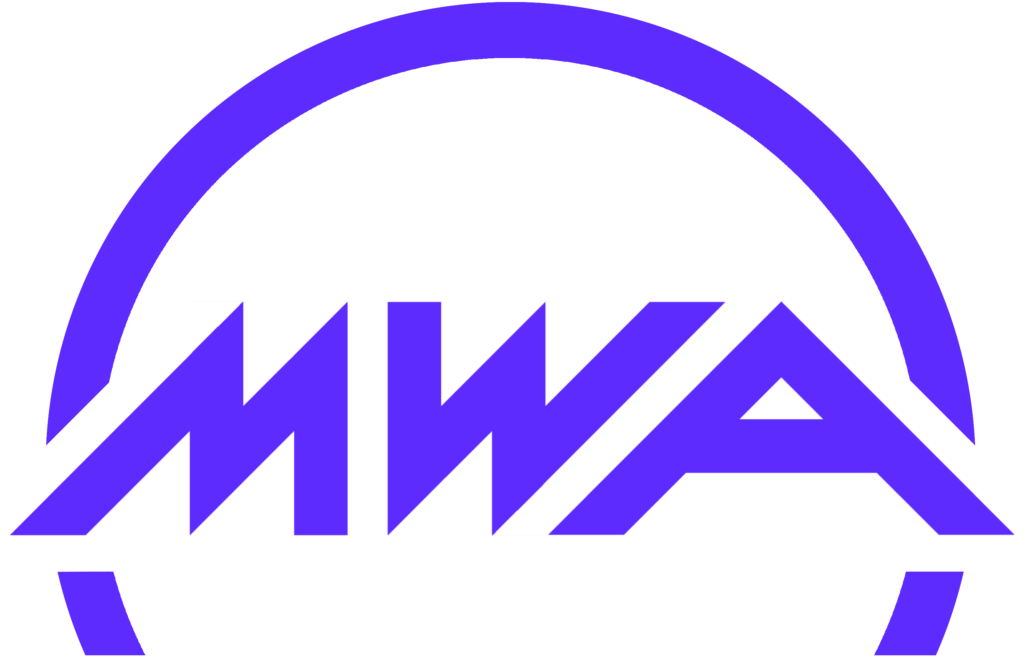
If you’re interested in running a Social Media Ad campaign, get in contact with Model Western Agency. We are Meta Ads specialists and have a lot of experience in a number of different industries.
We offer the first month for free, Click book my strategy meeting below to claim 1 month of free Meta Advertising.

